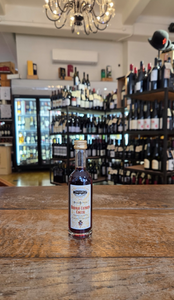
A traditional Barolo, one of Prunotto’s historic labels, whose first vintage was produced in 1905 from the best grapes of the vineyards in the heart of the Barolo appellation. Aging takes place in large oak barrels of various sizes, further enhancing the extraordinary typicity of Nebbiolo in this region.
Prunotto’s Barolo is garnet red in color. The nose is complex and generous with pleasing aromas of rose petals, red fruit and spicy notes. The palate is full, well-balanced with velvety tannins.
Alc: 13.5%
Prunotto
Over a Century in The Langhe
Cantina Sociale "Ai Vini delle Langhe", a winemaking co-op, was incorporated in 1904 in the city council room of Serralunga's Town Hall presided by Mr. Giacomo Oddero, a notary public and a youthful Alfredo Prunotto as a witness. Among those present at the ceremony were prominent citizens who made important contributions to the history of Alba and the surrounding communities, as well as many small local producers. The first harvest took place in 1905. Unfortunately the following years were burdened by an uncertain economic trend worsened by the effects of the First World War. On the deadline for renewal of the Cantina Social’s by-laws in 1922, many of its members changed their minds and no longer delivered their grapes to the co-op. The vintage was exceptional but was not abundant. The winery began to have serious financial difficulties and was put into liquidation.
In the middle of this predicament, Alfredo Prunotto met and married Luigina. Together they decided to take over the "Ai Vini delle Langhe" co-op and gave it their name. Their dedication and passion soon made the winery famous and it began exporting Barolo and Barbaresco all over the globe: first to South America and then to The United States, two markets that had recently opened to foreign trade. Prunotto was one of the few companies that believed in this commercial strategy.Barbera
Barbera is one of three Piemonte red grape varieties along with Dolcetto and Nebbiolo. It is known by its high acidity and quite low tannin levels which make it light and juicy akin to Pinot Noir. It is mostly made in the region of Barbera d'Alba and Barbera d'Asti in the northeast of Italy.








